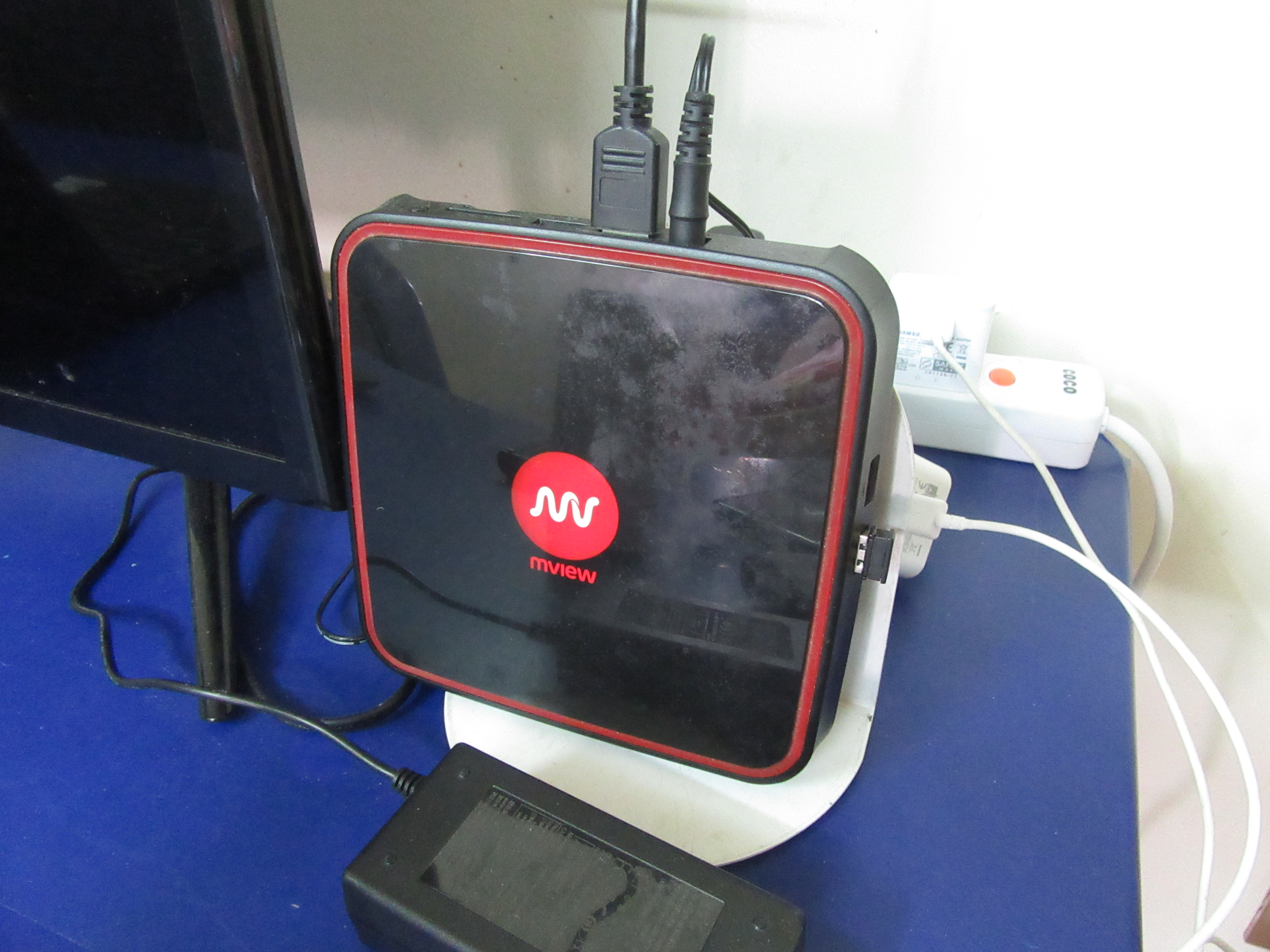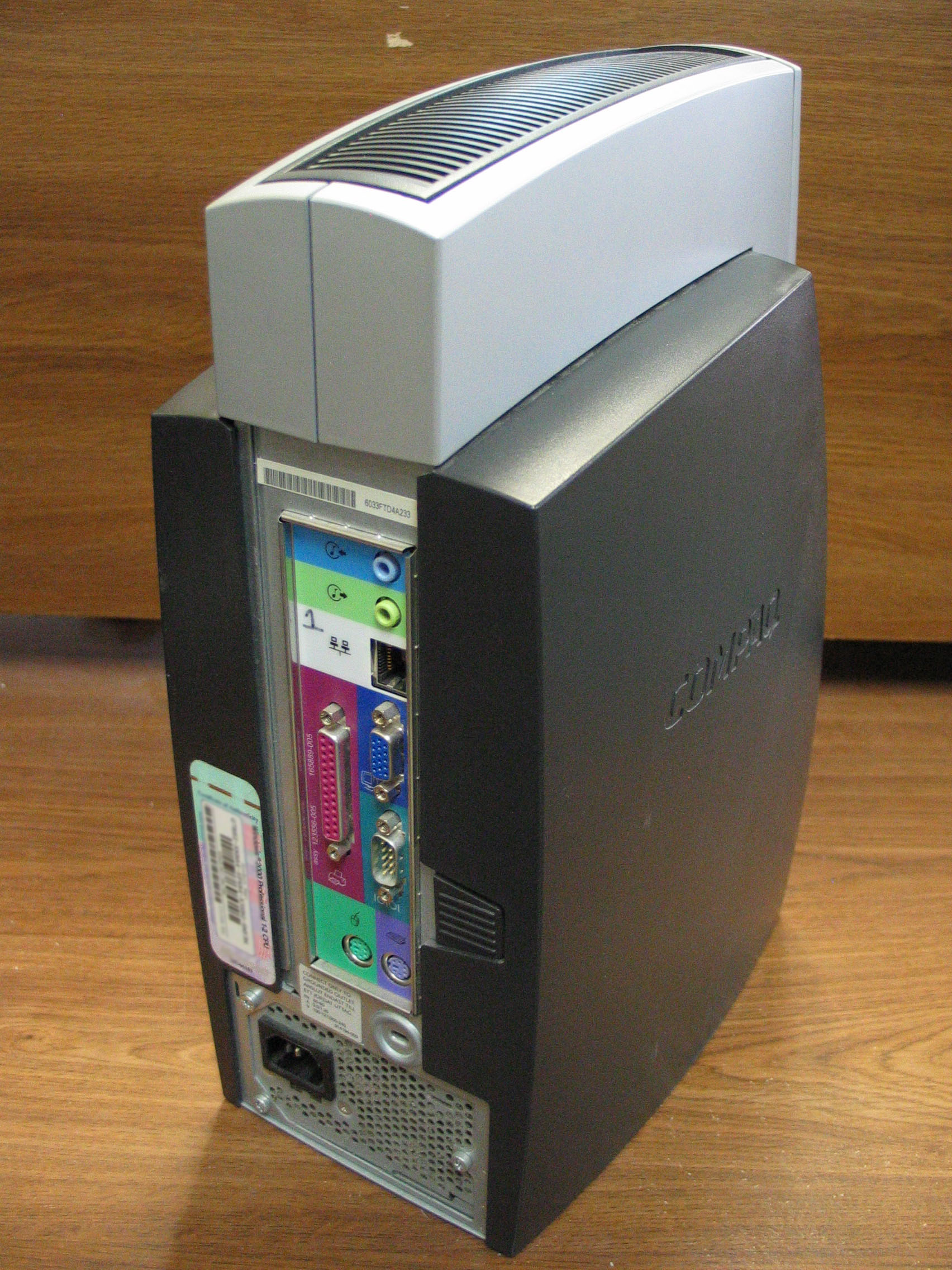|
Internet Appliance
An Internet appliance is a consumer device whose main function is easy access to Internet services such as World Wide Web, WWW or e-mail. The term was popularized in the 1990s, when it somewhat overlapped in meaning with an information appliance, desktop computer, network computer, or even thin client, but now it has fallen out of general use. Internet appliances were contrasted with any general purpose computer, but unlike personal computers, internet appliances were low cost and low margin products, usually using highly optimised low power silicon specifically built for internet use. Modern smart phones and tablet computers do approximately the same things, but are more powerful, more successful in the market, and generally not classified as Internet appliances. History Internet appliances were promoted by a variety of technology companies during the 1990s but, as the price of full-featured computers dropped, never met the market expectations. Jim Louderback would later descr ... [...More Info...] [...Related Items...] OR: [Wikipedia] [Google] [Baidu] |
IPTV
Internet Protocol television (IPTV), also called TV over broadband, is the service delivery of television over Internet Protocol (IP) networks. Usually sold and run by a Telephone company, telecom provider, it consists of broadcast live television that is streamed over the Internet (multicast) — in contrast to delivery through traditional Terrestrial television, terrestrial, Satellite television, satellite, and Cable television, cable transmission formats — as well as video on demand services for watching or replaying content (unicast). IPTV broadcasts started gaining usage during the 2000s alongside the rising use of broadband-based internet connections. It is often provided bundled with internet access services by ISPs to subscribers and runs in a closed network. IPTV normally requires the use of a set-top box, which receives the encoded television content in the MPEG transport stream via IP multicast, and converts the Data packet, packets to be watched on a TV set or ot ... [...More Info...] [...Related Items...] OR: [Wikipedia] [Google] [Baidu] |
MSN Companion
The MSN Companion was a small-scale personal computer terminal that was designed for easy access to MSN services on the Internet, such as Hotmail, while still being cheap and easy to use. They were intended for use by people with little knowledge of computers or technology, and many included several features aimed at the elderly or disabled, such as easier-to-read monitors. The device was designed by Microsoft. History The device was first unveiled at the COMDEX conference in November 1999, where it was first described as a 'MSN-based Web companion'. In June 2000, Vestel USA Inc, Compaq and eMachines began working with Microsoft to create the first MSN Companions. Mock-ups of RCA, Acer and Inventec Companions were also seen. While the MSN Companion was initially received with praise, it did not perform successfully in the market and Microsoft and MSN stopped providing support for Companions in October 2003. Early Companion models All MSN Companions ran an early version of Mic ... [...More Info...] [...Related Items...] OR: [Wikipedia] [Google] [Baidu] |
I-Opener
The i-Opener is a discontinued low-cost internet appliance produced by Netpliance (later known as TippingPoint) between 1999 and 2002. The hardware was sold as a loss leader for a monthly internet service. Because of the low cost of the hardware, it was popular with computer hobbyists, who modified it to run desktop PC software without the internet service. History Netpliance introduced the i-Opener in November 1999 at a $99 promotional price. It was designed to be an easy-to-use, low-cost internet appliance for first-time users of the World Wide Web. Access to the internet was limited to Netpliance's own $21/month service plan, and users were limited to Netpliance's own web browser. There was no provision for installing third-party software. The keyboard had a dedicated key for ordering pizza from participating pizza parlors. The hardware was sold below cost as a loss leader, with the expectation that Netpliance would recoup the money lost in manufacturing costs via its ... [...More Info...] [...Related Items...] OR: [Wikipedia] [Google] [Baidu] |
EPod
ePods, Inc., was a short-lived American technology company active from 1999 to 2000. Its flagship product was the ePodsOne (EP1), an internet appliance. ePods was founded in 1999 as a subsidiary of Salton Inc. during the Dot-com bubble, dot-com bubble era. ePods and the EP1 was discontinued in 2000. The EP1 was described as: * Compact and light Internet appliance, about the size of a magazine * Requires only power and a phone line * 256-color, 8.2-inch, 640x480, 640 x 480 LCD touchscreen controlled by stylus; also includes onscreen keyboard * Customized Internet content and 5 e-mail accounts ($24.99 monthly service) * 129 MHz, 32-bit RISC processor, 16 MB RAM, 56 kbit/s modem, rechargeable NiMH battery, * PCMCIA Slot II port, 2 USB ports, a serial port, IrDA 1.1 port, internal microphone, headphone and microphone jacks * Windows CE operating system * 2.2 pounds * Partnered with Google for search * Originally $199 (retail) The product lives on as a Hack (programmer su ... [...More Info...] [...Related Items...] OR: [Wikipedia] [Google] [Baidu] |
IPAQ (desktop Computer)
The iPAQ Desktop Personal Computer in its various incarnations was a legacy-free PC produced by the Compaq Computer Corporation around the year 2000. It was inspired by the iMac, and was primarily designed to be a portable desktop computer that could be used as a simple internet-capable computer. Hardware The iPAQ had very few limitations on upgradability; hard drives, RAM, CPU and 'Multi-Bay' drives can be readily interchanged, although the iPAQ did not contain sockets for expansion cards. It featured an interchangeable 'Multi-Bay' slot that could accept a 3.5 inch LS SuperDisk drive (the only way to read a floppy disk - standard Multi-Bay floppy drives do not work), optical drives, or a secondary hard disk device. The slot was the same as those found on many Compaq Armada and many other HP/Compaq laptop computer systems. By a method of convection for cooling, these computers were commonly found in office environments due to their low noise ( dB) output. The iPA ... [...More Info...] [...Related Items...] OR: [Wikipedia] [Google] [Baidu] |
Cidco MailStation
The CIDCo MailStation was a portable e-mail terminal first introduced by CIDCO Inc in 1999 at Amazon.com and was marketed as the Mivo 100 by EarthLink. The MailStation is no longer sold by either EarthLink or Amazon. The MailStation was designed to send and receive e-mails via a standard POTS telephone line. It was intended as an alternative to a laptop computer in regards to its messaging capabilities and also as an alternative to a personal computer A personal computer, commonly referred to as PC or computer, is a computer designed for individual use. It is typically used for tasks such as Word processor, word processing, web browser, internet browsing, email, multimedia playback, and PC ... for those who for whatever reason do not have access to one but who wish to enjoy the benefits of e-mail. The device could hold up to four hundred messages and up to one thousand contacts. Most e-mail attachments could not be viewed with the device, though later models were able t ... [...More Info...] [...Related Items...] OR: [Wikipedia] [Google] [Baidu] |
Amstrad E-mailer
The Amstrad E-mailer (often stylized as E-m@iler or written as Emailer or Em@iler) is a Personal Communication Centre that is a landline phone device, launched in March 2000. History Design and release The idea for the Amstrad E-mailer was conceived by Bob Watkins and was called BSI. The product was designed by Cliff Lawson and Ian Saward who started working on the Emailer in 1997. It was based on the Amstrad PB1500 Landline phone, using the same design and layout. The first Amstrad E-mailer was a collaboration between Amstrad and BT, with Amstrad using the backend and email server provided by BT. BT released their own e-mail phone, the BT Easicom 1000, in 1998, 2 years before the Emailer's release. When the Amstrad E-mailer was released in March 2000, it had the "Powered by BT" logo printed on it. By 2002 Amstrad hosted their own Email/Internet service and broke all ties with BT. The bootloader was named "PBL", an abbreviation for "Primary Boot Loader", and was designed by ... [...More Info...] [...Related Items...] OR: [Wikipedia] [Google] [Baidu] |
3Com Audrey
The 3Com Ergo Audrey is a discontinued internet appliance from 3Com. It was released to the public on October 17, 2000, for USD499 as the only device in the company's "Ergo" initiative to be sold. Once connected to an appropriate provider, users could access the internet, send and receive e-mail, play audio and video, and synchronize with up to two Palm OS-based devices. ''Audrey'' was the brainchild of Don Fotsch (formerly of Apple Computer and U.S. Robotics) and Ray Winninger. Fotsch and Winninger had a vision for a family of appliances, each designed for a specific room in the house. The brand ''Ergo'' was meant to convey that intent, as in "it's in the kitchen, ''ergo'' it's designed that way".Direct Knowledge - I was there at the time that it was said. - Rob Hudson There were plans to serve other rooms in the house as well. They considered the kitchen to be the heart of the home and the control room for the home manager. Fotsch coined the phrase "Internet Snacking" to descr ... [...More Info...] [...Related Items...] OR: [Wikipedia] [Google] [Baidu] |
Personal Internet Communicator
The Personal Internet Communicator (PIC) is a consumer device released by AMD in 2004 as part of AMD's 50x15 Initiative to enable people in emerging countries access to the internet. The PIC was deployed by Internet service providers (ISPs) in several developing countries. It is based on an AMD Geode CPU and uses Microsoft Windows CE and Microsoft Internet Explorer 6. The fanless PC runs the low-power Geode x86 processor and is equipped with 128 MB DDR memory and a 10 GB 3.5-inch hard drive. The device's price is $185 with a keyboard, mouse, and preinstalled software for basic personal computing and internet/email access and $249 with a monitor included. Transfer to Data Evolution Corporation AMD stopped work on the Personal Internet Communicator project after nearly two years of planning and development. In December 2006 AMD transferred PIC manufacturing assets to Data Evolution Corporation and the device was then marketed as the decTOP. Local service provider ... [...More Info...] [...Related Items...] OR: [Wikipedia] [Google] [Baidu] |




